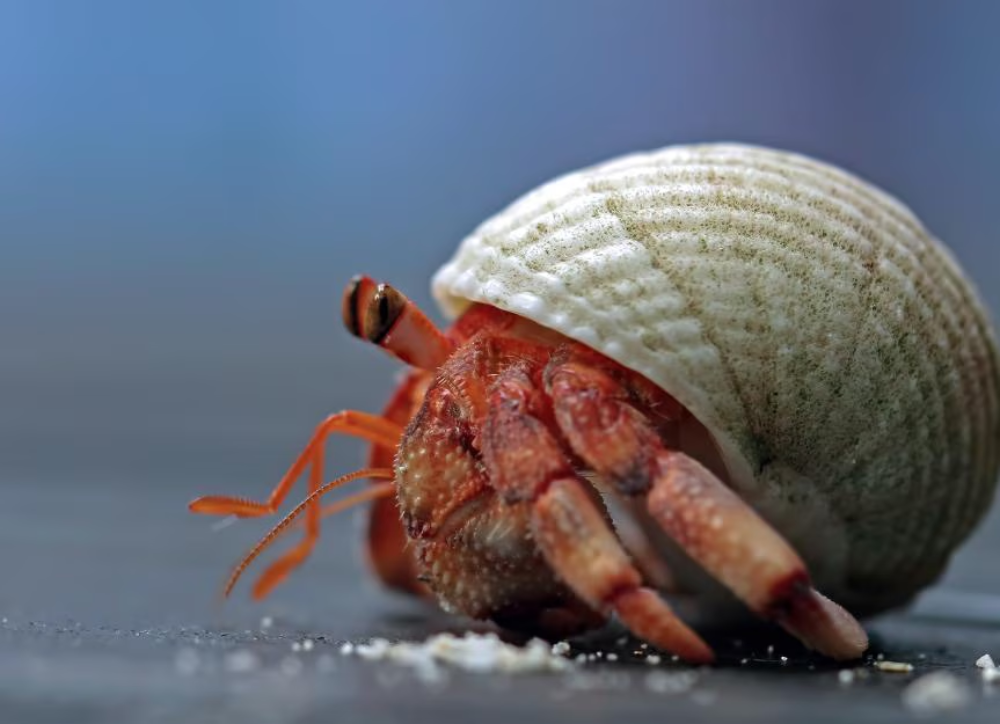In the vast realm of marine life, one creature stands out not only for its peculiar appearance but also for its remarkable lifestyle—the hermit crab. These small, shell-dwelling crustaceans have captured the curiosity of both scientists and nature enthusiasts alike with their unique behaviors and adaptations. Let us embark on a journey into the fascinating world of hermit crabs, exploring their biology, habitats, social dynamics, and the intricacies of their daily lives.
Introduction to Hermit Crabs
Hermit crabs belong to the superfamily Paguroidea, which includes over 1100 species distributed across the world’s oceans, ranging from shallow waters to deep sea habitats. Despite their name, these creatures are not true crabs but are instead more closely related to squat lobsters and porcelain crabs. What distinguishes hermit crabs from their crab relatives is their asymmetrical abdomen, which is soft and curved to fit into the spiral shells they adopt for protection.
Habitats and Distribution
Hermit crabs inhabit a variety of environments, from tropical coral reefs to temperate coastlines and even the deep sea. They are most commonly found in shallow waters, where they scavenge for food and seek out suitable shells to inhabit. These shells provide both protection and mobility for the hermit crab, allowing it to retreat from predators and transport its home as it forages for food.
Adaptations and Behavior
One of the most intriguing aspects of hermit crabs is their ability to use and switch shells throughout their lives. As they grow, hermit crabs must continuously seek out larger shells to accommodate their increasing size. This process, known as “shell switching,” often involves competition among individuals for the most suitable shells, with larger crabs typically dominating smaller ones.
Hermit crabs are also known for their social behaviors, often forming aggregations in areas with abundant resources and suitable habitat. These gatherings serve various purposes, including mating, foraging, and shell exchange. Within these groups, complex interactions occur as individuals vie for dominance and access to resources.

Feeding Habits
Hermit crabs are opportunistic feeders, scavenging for a wide range of organic matter, including algae, detritus, small invertebrates, and carrion. They possess a diverse array of feeding appendages, including specialized mouthparts for tearing and grinding food, as well as sensory organs to detect prey and potential threats.
In addition to scavenging, some hermit crab species engage in symbiotic relationships with other organisms, such as anemones and algae, which may inhabit their shells. These symbionts provide additional protection and camouflage for the hermit crab while benefiting from the scraps of food the crab consumes.
Reproduction and Life Cycle
Hermit crabs exhibit a variety of reproductive strategies, with mating typically occurring during the warmer months of the year. After mating, females release fertilized eggs into the water, where they undergo a series of larval stages before settling to the ocean floor as juveniles. As they grow, juvenile hermit crabs begin to seek out and inhabit empty shells, marking the beginning of their independent lives.
The life cycle of hermit crabs is characterized by a series of molts, during which individuals shed their exoskeletons to accommodate growth. Molting is a vulnerable period for hermit crabs, as they are soft and defenseless until their new exoskeleton hardens. To minimize the risk of predation during this time, hermit crabs often seek shelter in secluded areas or bury themselves in the sand.
Conservation and Threats
While hermit crabs are not typically targeted by commercial fisheries, they face various threats due to habitat degradation, pollution, and climate change. Coastal development and habitat destruction pose significant risks to hermit crab populations, as they rely on healthy ecosystems for food and shelter. Additionally, pollution from runoff and marine debris can directly impact hermit crabs through ingestion or entanglement.
Climate change presents further challenges for hermit crabs, as rising sea temperatures and ocean acidification can disrupt marine ecosystems and alter the availability of suitable habitat. These changes may affect the distribution and abundance of hermit crab populations, potentially leading to declines in certain species.
Conclusion
In conclusion, hermit crabs are fascinating creatures that play important roles in marine ecosystems worldwide. From their unique adaptations to their complex social behaviors, these small crustaceans offer insights into the resilience and diversity of life in the oceans. As stewards of the environment, it is essential that we continue to study and protect hermit crab populations to ensure their survival for generations to come. By understanding and appreciating these remarkable creatures, we gain a deeper appreciation for the intricate web of life that sustains our planet’s biodiversity.









